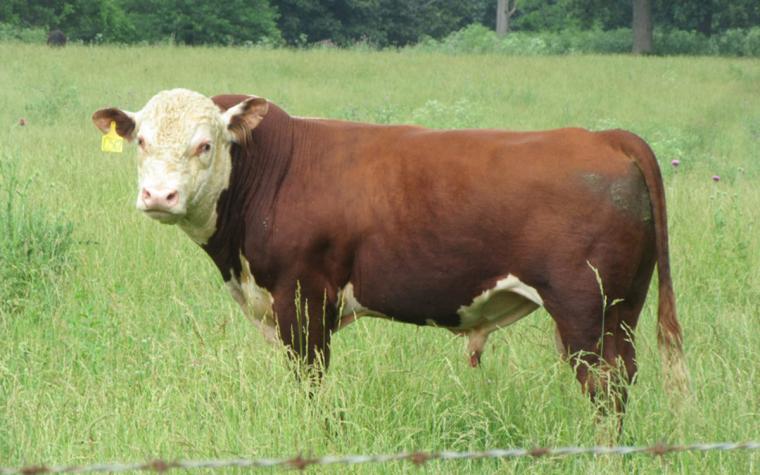“Calf production is perhaps the most important metric that supports the existence of the cattle industry, making bull health and productivity incredibly important” says Ian McGregor, University of Missouri Extension livestock field specialist.
The Bull Breeding Soundness Exam (BSE) Days are intended to assess the general health, structural soundness and reproductive potential of bulls and to provide education seasons to individual producers on bull management for successful breeding, McGregor said.
During the Southwest Missouri Spring BSE Days, MU Extension partnered with seven veterinary clinics to educate 43 farms on bull management, and 152 bulls received a BSE. Twelve bulls either failed their exam or were deferred to be tested later by a veterinarian. That is an 8% failure/deferral rate, which is similar to BSE Day results in previous years, McGregor said. Reasons for failure include low-quality semen, no semen sample, penile injury, penile warts and scrotal frostbite. Bulls that failed can be replaced ahead of the breeding season to help support a successful breeding season. Bulls that were deferred can be retested in 60 days.
“Body condition score (BCS) and energy status of a bull is an important factor for the bull to be able to breed females and maintain adequate semen quality,” he says. A BCS of 5 is generally the desired score for both bulls and cows, but a BCS of 6 tends to be the goal for animals going into a season that demands more energy, like the breeding season for bulls. Forty-seven bulls scored 4 or less. The early spring, preceding the spring flush of forage, can be a difficult time to maintain or add condition on cattle, as these animals are typically on purchased feed, the supply of which could be dwindling this time of year. Further, many of these bulls have already been spending time with females and perhaps using their energy reserves to breed them.
“Bulls spend a lot of time on their feet, running around trying to mount females during the breeding season” says McGregor. “If a bull has poor leg or foot structure, it can make the breeding effort uncomfortable, and the bull may be less productive.”
During BSE Days, foot structure and pastern angles were evaluated, and education was provided to producers on the importance of the structural soundness of feet and legs and what to look for. There weren’t any remarkable structural issues observed of bulls in the 2025 spring BSE Days, but 13 bulls had less than ideal claw scores and/or pastern angles. While these scores don’t render a bull useless, McGregor suggests that producers should be wary of continuing to breed with genetics that may create offspring with poor foot or leg structure.
Bull BSE Days are a cooperative effort of MU Extension, local veterinarians and pharmaceutical companies to educate cattle producers on bull management, identify bulls that need to be replaced and gather data for upcoming MU Extension programming. If you are a veterinarian in southwestern Missouri and would like to take part in these efforts in the future, contact your local MU Extension livestock field specialist for more details.
